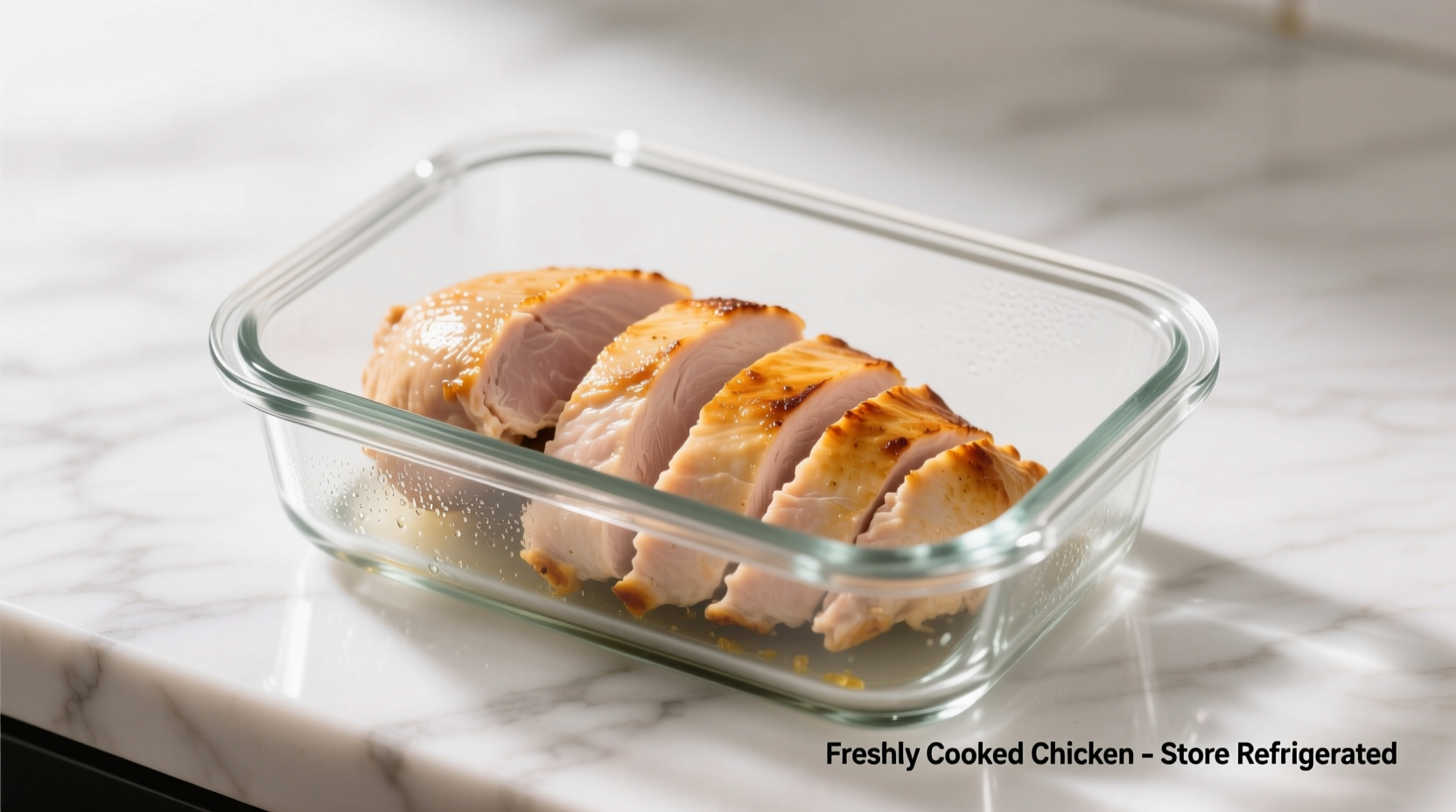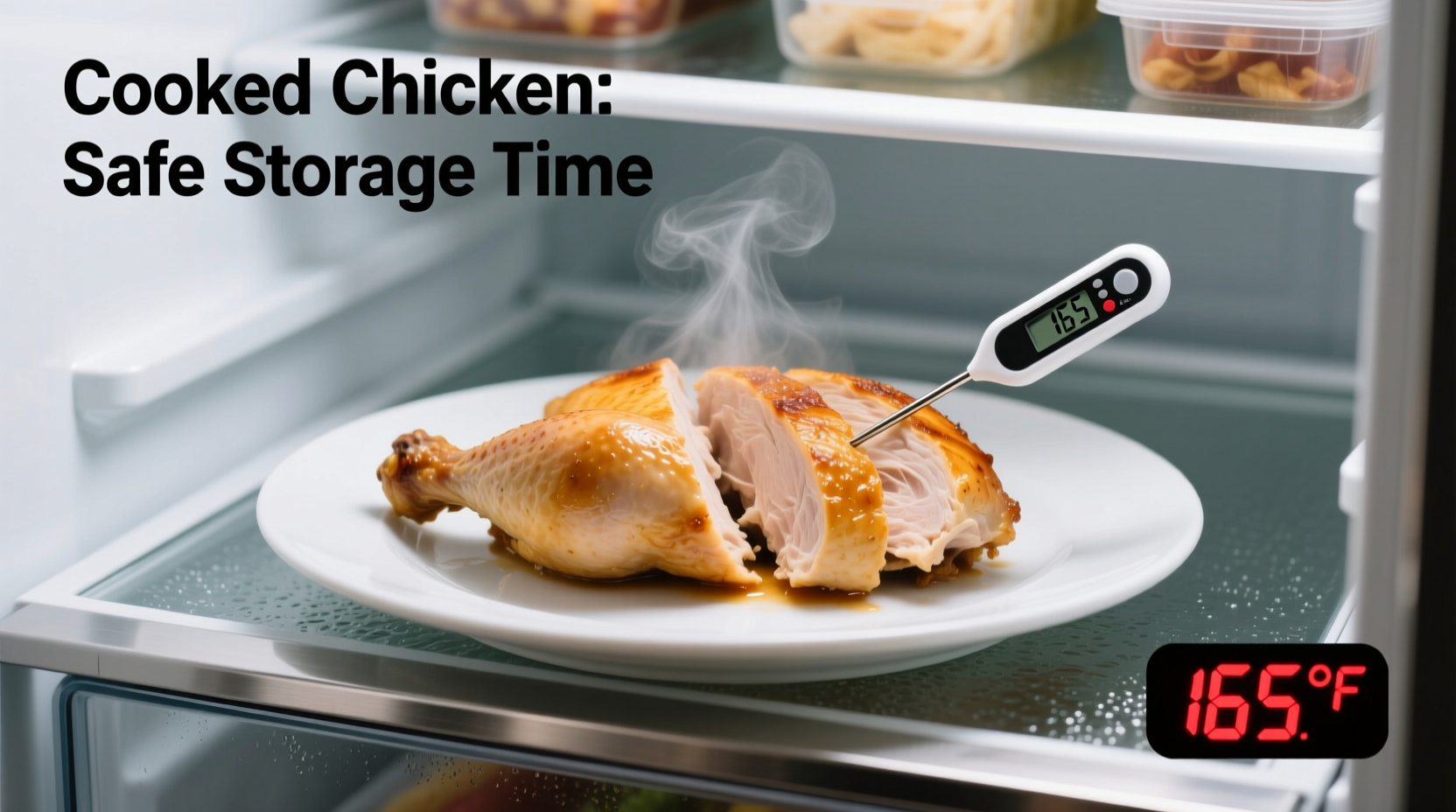Ever wonder if that leftover chicken from Sunday's dinner is still safe to eat on Thursday? You're not alone. Each year, millions of Americans experience foodborne illness from improperly stored leftovers. Getting chicken storage right isn't just about avoiding waste—it's about protecting your family's health.
Why the 3-4 Day Rule Matters for Your Safety
When cooked chicken enters the temperature danger zone (40°F-140°F), bacteria like Salmonella and Staphylococcus aureus multiply rapidly. The USDA's 3-4 day guideline isn't arbitrary—it's based on extensive food safety research showing exponential bacterial growth after this period.
According to the Centers for Disease Control and Prevention, poultry causes approximately 21% of all foodborne illness outbreaks in the United States. Proper refrigeration dramatically reduces this risk. The Food Safety and Inspection Service emphasizes that cooked chicken should never be kept beyond 4 days, even if it appears normal.
Your Step-by-Step Refrigeration Protocol
Following these steps ensures your cooked chicken stays within safe parameters:
Cooling Properly Before Storage
Never place hot chicken directly in the refrigerator. This raises the internal temperature of your fridge, creating a breeding ground for bacteria. Instead:
- Divide large portions into smaller, shallow containers
- Cool to room temperature within 2 hours (1 hour if room temperature exceeds 90°F)
- Use an ice bath for rapid cooling of soups or stews
Optimal Storage Containers
Air-tight containers prevent cross-contamination and moisture loss. Glass containers with locking lids maintain consistent temperature better than plastic. If using plastic, choose BPA-free options specifically designed for food storage.
| Storage Method | Maximum Safe Time | Quality Preservation |
|---|---|---|
| Air-tight glass container | 4 days | ★★★★★ |
| Plastic container with tight seal | 3-4 days | ★★★★☆ |
| Aluminum foil wrap | 2-3 days | ★★★☆☆ |
| Plastic wrap directly on surface | 2 days | ★★☆☆☆ |
Refrigerator Placement Strategy
The back of the bottom shelf maintains the most consistent temperature (typically 34-38°F). Avoid the refrigerator door where temperature fluctuates with each opening. Use a refrigerator thermometer to verify your appliance maintains 40°F or below.
Spotting Spoilage: Beyond the Clock
While the 3-4 day rule is your primary guide, always inspect chicken before consuming. Discard immediately if you notice:
- Visual changes: Grayish-green discoloration or visible mold
- Texture issues: Slimy film or sticky surface
- Odor signals: Sour, ammonia-like, or sulfur smells
- Structural changes: Unusual softness or mushiness
Remember: Pathogenic bacteria that cause food poisoning often don't produce noticeable changes in food. When in doubt, throw it out—no leftovers are worth risking illness.

Extending Your Leftovers' Life Safely
Need more time than 4 days? Freezing is your solution:
Freezing Best Practices
For optimal results when freezing cooked chicken:
- Portion into single-serving sizes
- Remove as much air as possible from packaging
- Use freezer-safe containers or vacuum sealing
- Label with contents and date
Properly frozen cooked chicken maintains safety indefinitely, though quality peaks within 2-6 months. The USDA recommends consuming frozen cooked poultry within this timeframe for best texture and flavor.
Common Storage Mistakes to Avoid
Even with good intentions, these errors compromise safety:
The Room Temperature Myth
"If it's been out for dinner, it's fine to refrigerate after"—this thinking causes countless foodborne illnesses. The USDA Food Safety and Inspection Service states that cooked food should never remain in the temperature danger zone (40°F-140°F) for more than 2 hours (1 hour above 90°F).
Reheating Misconceptions
Reheating doesn't make spoiled chicken safe. While proper reheating (to 165°F) kills active bacteria, it doesn't eliminate toxins already produced during spoilage. Never attempt to "rescue" questionable leftovers through reheating.
Contextual Considerations
While the 3-4 day rule applies universally, certain situations require extra caution:
- Immune-compromised individuals: Reduce to 2-3 days for added safety
- High-moisture preparations: Chicken salad or soups may spoil faster
- Added ingredients: Mayonnaise-based dishes have shorter shelf life
- Power outages: Discard if refrigerator temperature exceeded 40°F for 4+ hours
When Leftovers Become a Health Hazard
Consuming chicken stored beyond recommended times risks serious illness. According to CDC data, Salmonella infection causes approximately 1.35 million illnesses annually in the US, with poultry as a primary source. Symptoms typically appear 6-48 hours after consumption and include:
- Nausea and vomiting
- Abdominal cramps
- Diarrhea (sometimes bloody)
- Fever and chills
Vulnerable populations—including young children, elderly adults, pregnant women, and immunocompromised individuals—face higher risks of severe complications from foodborne pathogens.











 浙公网安备
33010002000092号
浙公网安备
33010002000092号 浙B2-20120091-4
浙B2-20120091-4